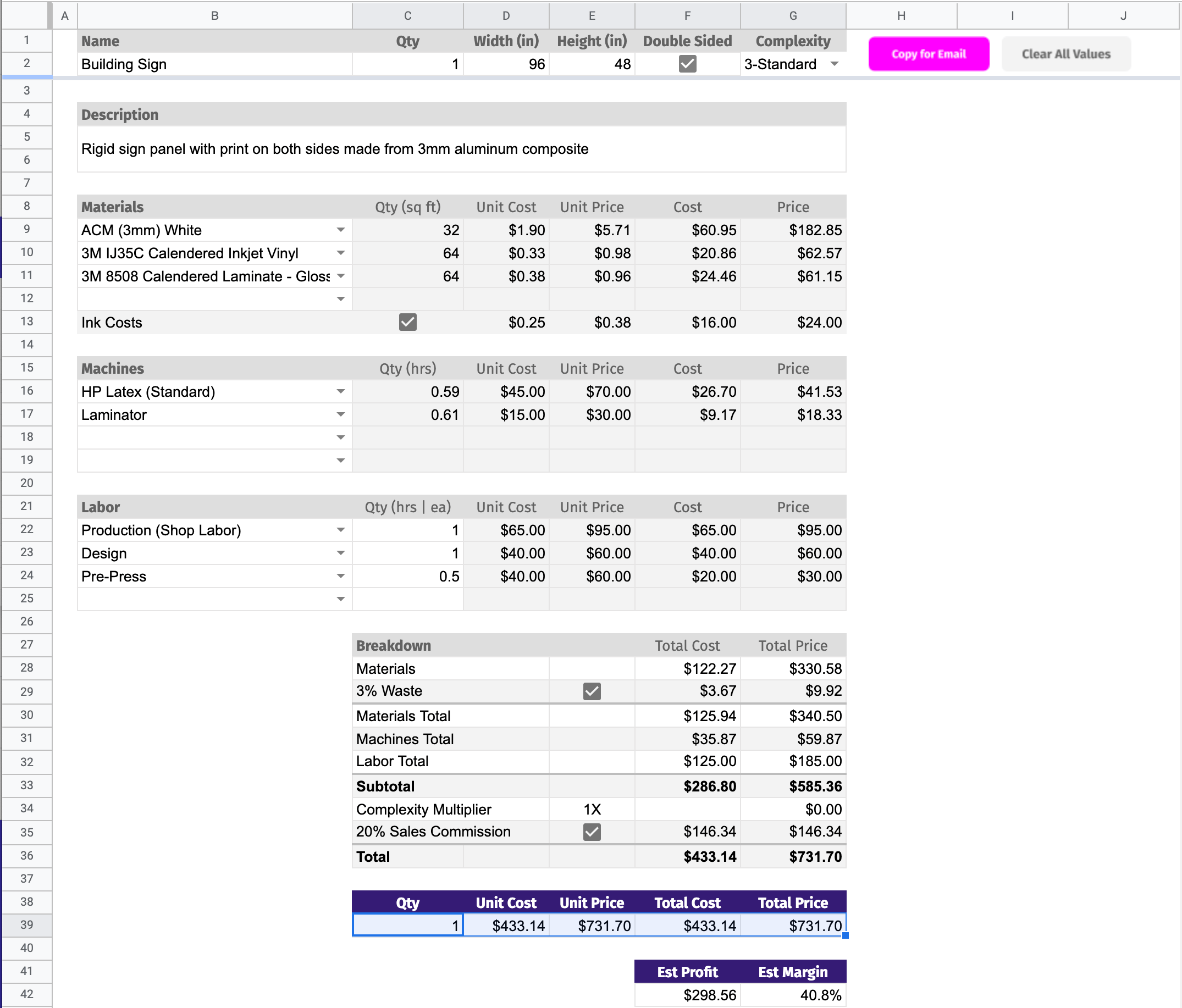Ready for the scary idea for the day? Yeah, too bad. Here it is anyway.
The majority of clients who are not happy with your service will NOT let you know.
They’ll just stop doing business with you and move on with their lives.
Honest mistakes happen. That’s why it’s so important that you ask each client for feedback. It’s better to be PRO-active instead of RE-active. We’ve already covered how to gather feedback and generate referrals.
Today’s topic is what to do when you actually know you’re dealing with an unhappy client.
You are dealing with an unhappy customer
So the worst has happened, a job got messed up and now you’re fielding phone calls and emails from Tom. He’s not your best customer or your worst. He places an order every couple months, but that last order didn’t come out just right.
Your first step is to pause and take a deep breath. It seems really bad right now. But remember that most mistakes are survivable.
It’s only when you start stacking mistake after mistake that you get yourself into true trouble.
Do your research
It’s not always possible, but when you can, prepare yourself with as much info you can gather.
Talk with the production team who worked on the order.
Ask the sales rep or CSR about the details.
Review any emails or communications between your team and your client
That way, you’ve got your side of the story straight. Now you’re ready for the customer’s story.
Break out the phone
Email might seem an efficient way to solve problems. But if you’re trading 5 emails before the issue is put to bed, then it’s not so efficient.
Besides most of our communication is non-verbal. Tone of voice, inflection — you don’t get those
things in emails. You just have the words on the page. Intentions get misinterpreted and it’s all too easy for emails to become heated.
So in these situations, I always tell myself to “suck it up and make the call”.
Simple framework for phone calls with angry customers
1. Acknowledge their concern and let them know you’re going to help
Sometimes we have to really fight the urge to get defensive during this step. Arguing will only make things worse.
Hi Tom, I understand that you’re upset about the last job we did for you. If the job wasn’t right, I would be upset too. I want to help you get this resolved.
You don’t have to tell them they’re right. You don’t have to apologize if you don’t owe them one. But you do need to let them know you “understand where they are coming from”. We all want to feel heard and understood. Building empathy is important for the process.
2. Get their side of the story
Ask them to clarify what happened and then let them talk.
Tom, will you tell me about what happened?
Once they stop talking, stay silent for a few more moments after it becomes uncomfortable to see if they add anything else.
Your goal here is to identify the actual issue they’re upset about.
Is it because they claim your team was rude?
Did they approve a proof that had a misspelling?
Did you deliver 98 shirts, instead of 100?
Once you’re aware of the issue, rephrase it back to them. This let’s them know you understand. Don’t skip this part.
Ok I understand now. It looks like you wanted a more fashion forward shirt. But you didn’t realize they would fit a little tighter. And you’re upset because our team didn’t help you figure that out before. Do I have that right?
3. Offer a solution
This is the trickiest part of the equation.
Initially, the thought of losing a client terrified me. I would go overboard in an attempt to “wow” the customer. Giving them a huge discount on the next order or offering to refund the current order.
There are few orders that truly require a full refund.
Stop for a minute and think about the outcome that your client was initially looking for. Why were they buying shirts or signs in the first place?
A refund doesn’t help if they needed shirts for an event next week.
I see in my notes that your event is next Thursday. That leaves just enough time for me to get some shirts and reprint the ones that are too small. If we can have you 12 XL shirts to replace the 12 L that were a big too tight by end of day Wednesday, would that work?
It’s all my fault
In a client’s eyes, it’s almost always our fault. But in the case that you really are at fault, it’s now time to put on your apology hat and make it right.
Offer to fix the mistake by reprinting the job or fixing the error.
If they balk at the above solution, put the burden on your client.
I truly apologize for the mistake and really want to keep your business. What would you like me to do to make it right?
Angry clients don’t usually get asked this question.
It puts the burden back on to them in figuring out how to make it right. Their idea of a reasonable solution might be a lot less expensive that what you were thinking.
It’s actually your unhappy customers’ fault
This is a tough spot to be in. It’s so tricky to navigate.
You emailed them the order confirmation.
Your client signed off on the proof.
They had to see your disclaimer.
You produced everything as spec’d.
You might be tempted to explain the facts above to them. Trying to argue your case won’t help. The past is the past.
Sure, you could refer to the proof that you provided and they approve. Tell them they received multiple emails with the exact details of what was being produced.
Depending on the client, they might:
Own up to their mistake and still want you to reprint the job.
Pay you and take the job as-is.
Wash their hands of the entire transaction and walk away blasting you on social media.
Any of those outcomes are not ideal. Your client will leave with a sour taste in their mouth. People are much more likely to talk about bad experiences than good ones.
Do not place blame on your customer, even if they are at fault.
I know it feels wrong to apologize when you did nothing wrong. You don’t have to apologize.
Empathize with them. Simply acknowledge the issue and figure out how to fix it.
Think back to the original outcome they wanted when placing an order. Then move towards helping them achieve their outcome.
It seems we like there was a communication breakdown somewhere. And your event sponsor was left off the shirts. What if we print up a 3ft x 6ft banner with their logo? You can hang it up and they’ll get more exposure than they would on the bottom of the shirt. Does that solve the problem?
If you have doubts, simply ask them for their ideal solution.
How much does it actually cost you?
I know fixing your own mistakes is important to you. But fixing your client’s mistakes definitely stings a bit.
It might cost you quite a bit to fix their mistake now. But it could cost you a lot more in potential business down the road if you don’t fix it.
Some your most fiercely loyal clients will come from jobs that had “issues”.
Most people realize that mistakes happen. If your customers know that when mistakes happen, you’ll solve them quickly — then you’ll inspire their trust and loyalty.
Stop trying to “wow” customers
To succeed, you don’t have to kill yourself for each client. Companies like Zappos make us think that we need to really “wow” our customers with service. To really exceed their expectations.
But in reality, people don’t want to be wowed. They just want their problems solved with the least amount of effort on their part.
You’ll be doing well if you:
deliver on what you promised 98% of the time
quickly fix the mistakes the other 2% of the time
If your dealing with angry customers more than a few times a year, then that might be a symptom of a larger problem. Take a hard look at your current processes to see where you can tighten up.

